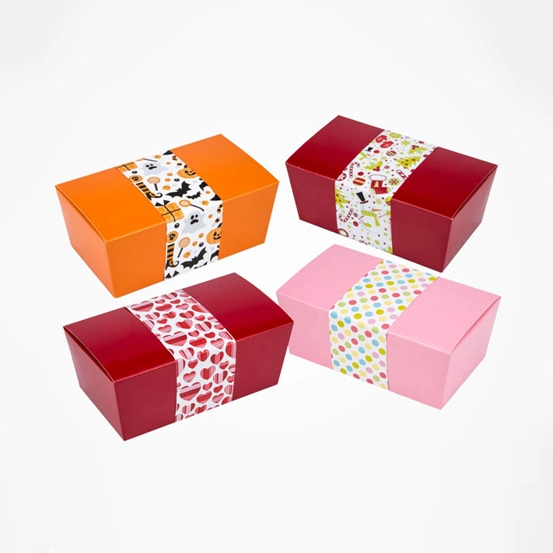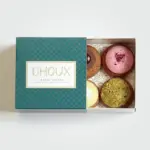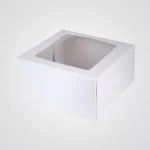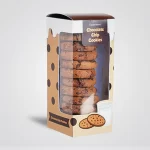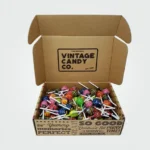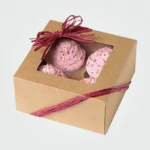Candy Boxes
Custom Candy Boxes
Treat lovers and sweet enthusiasts alike are drawn to candies not just by taste but also by their presentation. Our Custom Candy Boxes are thoughtfully designed to amplify the allure of your sweet offerings, making every candy moment unforgettable. Expertly tailored to house a variety of confections, these boxes promise more than just containment; they elevate the candy-eating experience. As a confectioner in the USA, investing in these Custom Candy Boxes means presenting your candies in packaging that speaks of quality, love, and dedication. Capture both the eyes and the taste buds of your customers with these visually delightful and durably constructed boxes.
Candy boxes are a popular way to store, protect, and showcase various types of candy. They come in many shapes, sizes, and designs, and can be used for a variety of purposes. In this post, we’ll explore the different types of candy boxes, the materials they are made from, and how they can be customized to fit your needs.
What is a Candy Boxes
Candy boxes are containers specifically designed to hold candy. They can come in various forms, including boxes, tins, bags, and jars. The main purpose of candy boxes is to protect and preserve the candy, as well as to make it easier to give as a gift. Candy boxes can be made from a variety of materials, including paperboard, plastic, metal, and glass.
Types of Candy Boxes
One-Piece Candy Boxes
One-piece candy boxes are typically made from a single piece of material that folds together to create the container. They are a popular choice for small candy items such as truffles or caramels.
Two-Piece Candy Boxes
Two-piece candy boxes are made up of a lid and base that fit together. They are commonly used for larger candy items such as chocolates or fudge.
Folding Carton Candy Boxes
Folding carton candy boxes are typically made of lightweight paperboard and can be folded into shape. They are a popular choice for retail packaging.
Window Candy Boxes
Window candy boxes have a clear plastic or glass panel to showcase the candy inside. They are often used for gift packaging and can come in various shapes and sizes.
Custom Candy Boxes
Custom candy boxes are designed specifically to fit the needs of the customer. They can come in any shape, size, or design, and can be made from a variety of materials.
Materials Used in Candy Boxes
Candy boxes can be made from various materials, each with their own unique features and benefits.
Paperboard
Paperboard is a popular choice for candy boxes due to its lightweight and cost-effective nature. It can also be easily printed on, making it a great choice for branding and customization.
Plastic
Plastic candy boxes are durable and often come in various shapes and sizes. They can also be molded into unique designs and are often reusable.
Metal
Metal candy boxes are sturdy and provide excellent protection for the candy inside. They are often used for premium chocolates and can be customized with various finishes.
Glass
Glass candy boxes are elegant and provide a clear view of the candy inside. They are often used for upscale confectionery items.
Design and Customization of Candy Boxes
Candy boxes can be customized to fit the needs of the customer, with various design and customization options available.
Colors and Finishes
Candy boxes can be printed in a variety of colors and finishes, including matte, gloss, and metallic.
Embossing and Debossing
Embossing and debossing can add texture and dimension to candy boxes, making them stand out on store shelves.
Foil Stamping
Foil stamping can add a luxurious touch to candy boxes, with various metallic foils available.
Printing Techniques
Printing techniques such as digital printing and offset printing can be used to create high-quality, detailed designs on candy boxes.
Inserts and Trays
Inserts and trays can be added to candy boxes to hold the candy securely in place and prevent it from moving around during transit.
Window Cutouts
Window cutouts can be added to candy boxes to showcase the candy inside and provide a sneak peek of what’s inside.
Sizes and Shapes of Candy Boxes
Candy boxes come in various sizes and shapes to fit different types of candy and customer needs.
Size
Candy boxes can range in size from small individual truffle boxes to large gift boxes that can hold several pounds of candy. The size of the box often depends on the size and quantity of candy it will hold.
Shape
Candy boxes can come in various shapes, such as rectangular, square, heart-shaped, and even novelty shapes like animals or vehicles. The shape of the box can be chosen based on the type of candy it will hold or the desired aesthetic.
Packaging Accessories for Candy Boxes
Packaging accessories can be added to candy boxes to enhance their appearance and protect the candy inside.
Ribbons and Bows
Ribbons and bows can be added to candy boxes to make them look more festive and gift-worthy.
Tissue Paper
Tissue paper can be added to candy boxes to protect the candy and add a pop of color to the packaging.
Shredded Paper Filler
Shredded paper filler can be added to candy boxes to cushion the candy and prevent it from moving around during transit.
Common Uses for Candy Boxes
Candy boxes are often used for a variety of purposes, from personal gifts to retail packaging.
Gifts
Candy boxes make great gifts for a variety of occasions, such as birthdays, holidays, and special events like weddings or baby showers.
Retail Packaging
Candy boxes are commonly used for retail packaging, as they can showcase the candy inside and make it more visually appealing to customers.
Corporate Gifts
Candy boxes can be customized with a company’s logo and used as corporate gifts for clients or employees.
Sustainability and Eco-Friendly Candy Boxes
Sustainability is an important consideration for many customers, and candy boxes can be made with eco-friendly materials and practices.
Recyclable Materials
Candy boxes can be made from recyclable materials such as paperboard, plastic, or glass. This allows them to be recycled after use and reduces waste.
Biodegradable Materials
Candy boxes can be made from biodegradable materials such as plant-based plastics, which break down over time and reduce the impact on the environment.
Sustainable Practices
Candy box manufacturers can implement sustainable practices, such as using renewable energy sources and reducing waste in their production processes. This helps to reduce the overall environmental impact of candy box production and use.
Uses of Candy Boxes
Candy boxes have various uses in different settings, from personal to commercial.
Personal Uses
Candy boxes can be used as gifts for loved ones on special occasions like Valentine’s Day, birthdays, weddings, or baby showers. They can also be used to pack candies for personal consumption or to share with friends.
Commercial Uses
Candy boxes are commonly used for retail packaging in candy shops, supermarkets, and gift shops. They can be customized with logos and other branding features to attract customers.
Tips for Choosing the Right Candy Boxes
When choosing candy boxes, there are several factors to consider to ensure you get the best quality and fit for your candy.
Size and Shape
Consider the size and shape of the candy that will go into the box to determine the appropriate size and shape of the box.
Material
Choose the material of the box depending on the type of candy and the desired level of protection. Paperboard boxes are common for lightweight candies while plastic or glass is suitable for heavier or fragile items.
Design and Style
Consider the design and style of the box that will complement the candy and add value to the packaging.
Sustainability
Choose candy boxes made from recyclable or biodegradable materials to reduce the environmental impact of the packaging.
Future of Candy Boxes
Looking to the future, candy boxes will continue to evolve and adapt to meet the changing needs and preferences of customers. As more consumers become conscious of environmental issues, candy box manufacturers will continue to develop new ways to make their products more sustainable and eco-friendlier. Furthermore, we can expect to see more creative and innovative designs and packaging solutions for candy boxes in the future.
Candy boxes are an essential part of the candy industry, providing protection and aesthetic value to the sweet treats they contain. By keeping these key points in mind, you can make informed decisions when choosing the right candy box for your needs. Finally, we hope this post has been informative and helpful in guiding you towards the perfect candy box for your candy products or gift-giving needs.
Summing Up
Candy boxes are an essential packaging solution for both personal and commercial use. They come in various sizes, shapes, and designs to suit different types of candy and customer needs. When choosing the right candy box, it is essential to consider factors such as size, material, design, and sustainability. By doing so, you can ensure that the candy remains protected, attractive, and eco-friendly. Candy boxes are an important packaging solution for both personal and commercial use. They come in various sizes, shapes, and designs to suit different types of candy and customer needs. In this post, we discussed the history of candy boxes, their types, materials, sizes and shapes, packaging accessories, common uses, tips for choosing the right candy boxes, and their sustainability.
Some key takeaways from this post include the importance of choosing the right size, shape, and material of the box to protect the candy and make it more visually appealing. We also discussed the various uses of candy boxes, including personal and commercial settings, as well as some tips to help you choose the best candy box for your needs. Lastly, we talked about the importance of sustainability in candy box production and the use of eco-friendly materials and practices.



